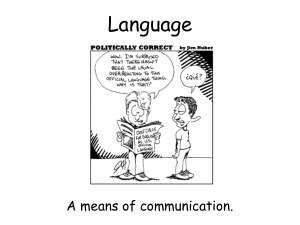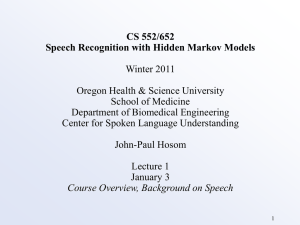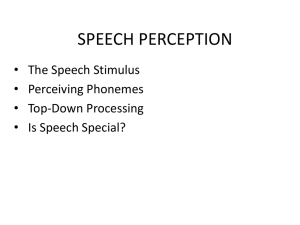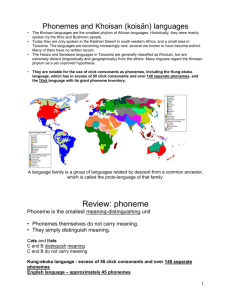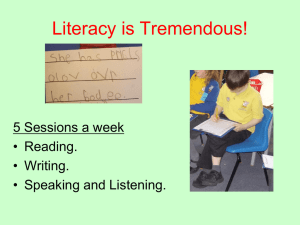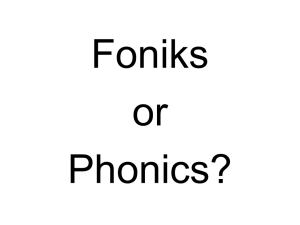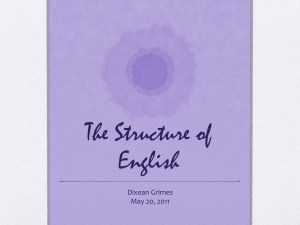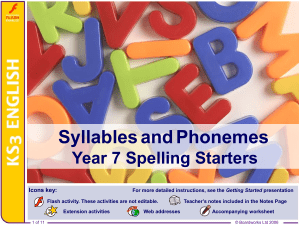LECTURE_10_Phonemic analysis
advertisement
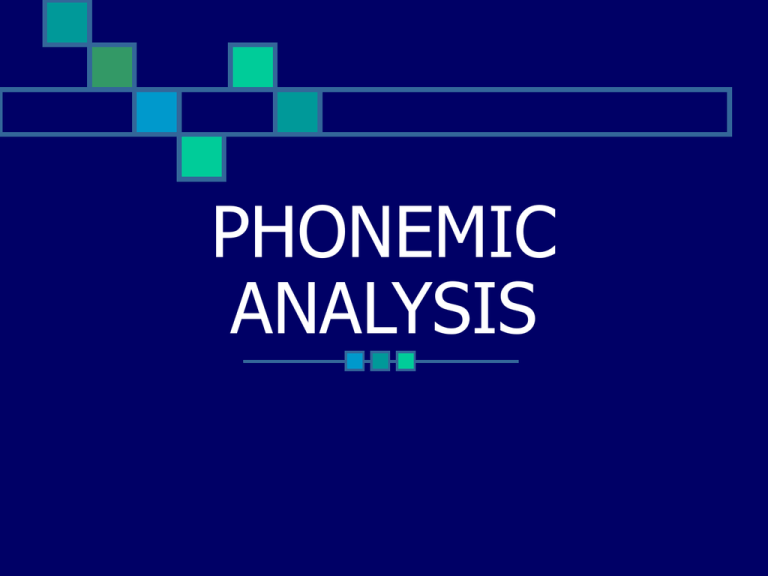
PHONEMIC ANALYSIS General assumption: Speech is composed of phonemes Whenever a speech sound is produced, it is possible to identify which phoneme the sound in question belongs to. Still, there are various problems! AFFRICATES Phonetically, they are composed of a plosive + fricative But, it is possible to treat each affricate as a single consonant phoneme (one-phoneme analysis) They can also be treated as composed of two phonemes each, all of which are established as independent phonemes in English (twophoneme analysis) /t∫з:t∫/ & /dζλdζ/ In the first case they would be considered as consisting of 3 phonemes, in the second case of 5 phonemes Which analysis is preferable? In the 2-phoneme analysis (no separtion of affricates) the total number of phonemes is smaller and should be preferred as more economical (the most efficient codes do not use unnecessary symbols) Still, 1-phoneme analysis is generally chosen by phonologists as preferable The arguments for: 1. Phonetic/allophonic argument: phonetic quality of /t/ and /∫/ in /t∫/ and /dζ/ is different from realisations of the sounds mentioned found elsewhere, e.g. Different quality of /t/ in “watch apes” vs. “what shapes” - still, this argument is weak 2. Distribution The proposed phonemes have distributions similar to other consonants, while other combinations of plosive+ fricative do not: /t∫/ and /dζ/ are found initially, medially and finally while no other combination has such a wide distribution. However, there are several consonants in English accepted as phonemes in spite of not being free to occur in all positions (think of r, w, j, h, ζ, ŋ/ 3. - - Combining with other cons. Free combining to form clusters would support the 1-phoneme analysis Initially they never occur in clusters Finally, they can be followed by t,d and preceded by l, n Another combination: pre-final l,n can occur with post-final t,d: e.g. squelched, hindged So, /t∫/ and /dζ/ do not combine freely to form clusters, particularly not initially Two-phoneme analysis Initial /t∫/ and /dζ/ would have to be interpreted as initial t,d + post-initial ∫,ζ (besides l,r,w,j) which can combine with t,d, only 4. Intuition of the native speaker Rather difficult to discover what native speakers (if untrained in phonetics and phonology) think or feel Other problems: Sounds transcribed as hw, hj Velar nasal ŋ (should it be treated as a separate phoneme or an allophone of the phoneme n occurring before g) The English vowel system Treating all long vowels and diphthongs as composed of two vowel phonemes: e.g. long vowels can be seen as containing short vowels twice, triphthongs would be composed of a basic vowel + one of ι,υ + ə (which makes three phonemes altogether) Another way of treating long vowels and diphthongs As composed of a vowel + a consonant (j, w, h, r), e.g. /eı/ - /ej/, /әυ/ - /әw/, /υә/ - /υh/, /i:/ - /ıj/. /a:/ - /ah/, /u:/ - /uw/ Thus, inequality of distribution is corrected for consonants that do not otherwise occur finally in a syllable. More about long vowels Remember NEUTRALISATION of /i:/ and /ı/ to /i/; i.e. Cases where contrasts between phonemes which exist in other places disappear in certain contexts Syllabic consonants A possibility is to add new cons. Phonemes to the existing list: syllabic l,r,n as in bottle, button, Hungary Clusters of s + plosive P, t, k in syllable initial position are aspirated, but when preceded by s they become unaspirated and could perhaps be transcribed as b, d, g because contrast between these two groups of consonants become neutralised in this context Schwa /ә/ - /ә/ can be treated as an allophone of several vowels, not only of /λ/ in unstressed syllables, e.g. Economy vs. economic German vs. Germanic DISTICTIVE FEATURES Distinctive feature analysis is one of many different ways of treating the notion of phoneme. The principle: phonemes are not minimum, independent, indivisible units but combinations of different features. In a table showing presence or absence of features in different consonants there would be no phonemes with the same combination of +s and –s; otherwise, they could not be treated as different phonemes

